Creating a Water Conservative Landscape
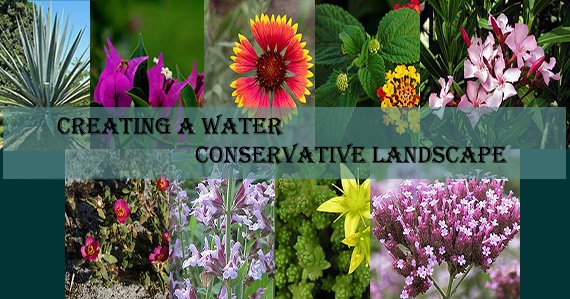
A Water Conserving Landscape Can Be Exciting
Most people hear the words "water conservation" and cringe, because the first thing that comes to mind is cactus. You can plant a landscape design that conserves water and is beautiful year round with the right kind of plants.
By accessing your landscape, you can choose where to plant different items and what to plant to save on water consumption in the hot summer months. It takes a bit of work before the fun part of planting items, but it's well worth it to cut down on your water bill and only use water when you are allowed to in the summer.
Here Comes the Drought
Summers seem to be longer, hotter and drier each year. Many areas will only let you use water on certain days of the month or week to keep your luscious landscaping alive and beautiful. You can plant flowers, shrubs, trees and grasses that you love, but you may lose them if you are ordered to limit your water usage. You can conserve water all year round with creative landscaping and make your lawn beautiful in the process.
Conduct a Site Analysis
If you conduct a thorough site analysis of your property, you can make informed decisions on your landscape design. Take note of several items including the angles of the sun at different times of the day, summer and winter wind patterns and snowdrift patterns if you live in a colder climate. Look at the areas of your property that are warmer or cooler because of your home's orientation or existing plants and trees in your landscape.
After you have this information, you can re-design your landscape to be beneficial to the environment as well as give you interest all year round.
Landscaping Tips and Tricks
You can help your entire lawn and landscape work better if you utilize some water conservation tips. Locate your trees that lose their leaves where they will provide shade to any planting beds and outdoor seating areas. This will lessen the need for water and keep you cool in the summer at the same time. You can place fences or shrubs on property lines to have a natural privacy fence, provide shade for other plants, protect from winter winds and to funnel summer breezes to your decks, patios and porches for added comfort.
Put your service-oriented features, such as a dog run or trash containers in the least desirable planting spots on your lawn. You still need these area to be accessible, but not in the best planting areas.
Limit the amount of lawn area and use turf grass in play areas. Turf grasses come in drought-tolerant mixes that use very little water. You can also use mulch in some areas or drought resistant groundcovers to limit your use of turf.
If your patios and walkways have surfacing materials that allow rain to penetrate them and if they reduce glare, your entire landscape will remain cooler and you can take advantage of any rainfall. Think about wooden decks, bricks or stone on top of sand for a walkway and wood chips or pea gravel on a sand base for pathways.
Group any water-loving plants together in one area only, but don't make it a large flowerbed. Put these plants in a shady area where you will have a high visual impact. You can achieve color and interest in your landscape design with flowering shrubs, trees, ground covers and plants with variegated leaves instead of annuals that need more care and water to survive.
Best Plants That are Drought Tolerant
All plants need water to survive, but many interesting and pretty plants are available from which to choose that actually can live without water for extended periods of time. And the best thing is that the list doesn't consist 100 percent of cactus.
Agave
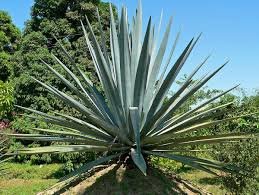
The agave is quite unique as it stores water inside of the thick foliage and has very deep roots to search out water naturally well beneath the surface of the soil. The leaves have sharp edges and the foliage is an unusual shape that is loved by landscapers.
Bougainvillea

Bougainvillea is a champion at being drought tolerant. It is one of the toughest shrubs you can find that thrives on neglect and in extreme and intense conditions. The beautiful pink blooms can brighten any landscape and they take very little care.
Portulaca
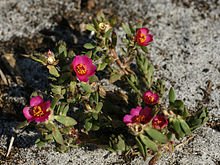
The common name for portulaca is moss rose. It is a flowering joyful plant that thrives in dry and poor soil. It has thick succulent leaves to enable it to survive for a long time without any water. This type of flowering plant is often used as a ground cover to keep your flowerbeds shady and cool. It comes in a very large variety of bright colors and requires warmth to thrive.
Gaillardia
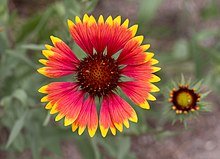
The common name for gaillardia is blanket flower. It is native in many states as a wildflower and as such, it has no special needs. They are a prolific bloomer that enjoys a warm and sunny spot and occasional watering. It blooms all summer and into the fall with red cone-like centers surrounded by orange and yellow petals.
Verbena
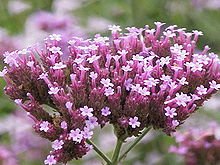
Verbena is an excellent ground cover that spreads rapidly to fill in around other flowering plants. It thrives in high heat with little water and come in a large variety of colors of clustering blooms. You will get unstoppable flowers from spring to fall and year round in warm climates.
Lantana

Lantana is a tropical plant that is very hardy and loved for its colorful and very fragrant flowers. It blooms throughout the spring and summer and in warmer climates can flower all year round. The beautiful pink and yellow blooms attract bees, butterflies and hummingbirds and it even grows well in pots in your landscape design.
Oleander

The oleander is a tropical shrub and a prolific bloomer. The flowers are beautiful and very fragrant, plus it comes in a variety of colors. You can choose from red, pink, yellow, white or purple to brighten your lawn. This shrub prefers full sun, but it also thrives with a few hours of shade per day.
Sage

Sage is drought resistant and is famous for its aromatic smell and flavor. It grows best when the last frost has passed and in plenty of sunshine. Remember not to over water your sage, because this will kill it.
Sedum
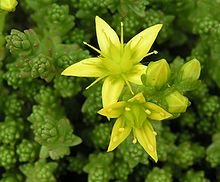
This plant is resistant to drought and only requires a bit of water once a week in the spring and summer and if needed, once a month in the winter. It grows well in all types of soil and prefers full sunlight to thrive.
These tips and tricks for where to locate your plants, shrubs and flowers of all types plus the list of drought resistant and tolerant plants enables you to have color and interest in your landscape even in the hottest and driest summers while conserving water at the same time.
✅ @nadinescudero, I gave you an upvote on your post!
If you are interested in claiming free Byteballs ($10+), just for having a Steem account, please visit this post for instructions: https://steemit.com/steem/@berniesanders/do-you-want-some-free-byteballs